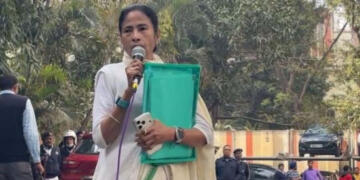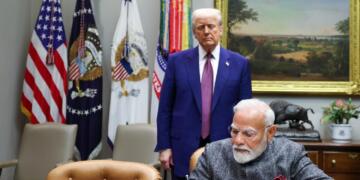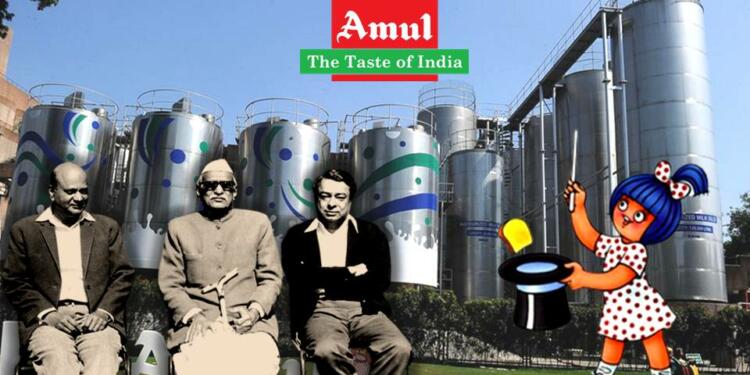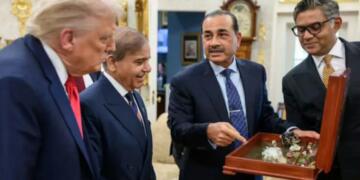On 28th July 2022, Prime Minister Narendra Modi was on a Gujarat visit to inaugurate and lay the foundation stone for multiple projects worth more than Rs. 1,000 crores at Sabar Dairy.
Addressing the gathering, PM Modi, highlighting Gujarat’s success story of cooperatives created by farmers, said that the dairy market of Gujarat has reached Rs 1 lakh crore. Gujarat has a rich tradition and culture of cooperatives. It has helped people collaborate in business affairs and has ultimately brought prosperity to the state. The same cooperative culture that has been achieved in milk production is now expanding toward farming too.
“Today the work of formation of 10 thousand Farmer Producer Organisations (FPOs) is going on in the country. Through these FPOs, small farmers will be able to directly connect with the food processing, value-linked export, and supply chain. The farmers of Gujarat are also going to benefit a lot from it”, he added.
In Sabarkantha, inaugurating various initiatives which will boost rural economy, support local farmers and milk producers. https://t.co/HMVvXQ9eDD
— Narendra Modi (@narendramodi) July 28, 2022
Farmer’s crisis in Gujarat
His effort to launch Gujarat’s cooperative culture in every sector and region of the country is the validation of its success. Cooperatives of Gujarat are not only a symbol of prosperity but also the direct proof of the successful business strategy of Gujarat.
Cooperatives are the association of individual persons in the same transactions of business, to meet their common economic, social, and cultural aspirations. People jointly create a democratically controlled enterprise with fair shares and profits distribution. The system helps them to maintain the growth of their cooperative enterprise as well as earn a fair profit.
The history of cooperatives starts from the period of the freedom struggle. When India was struggling to free itself from the clutches of colonial rule, the farmers’ movement became a strong force in that direction. Colliding with the freedom struggle, the suppression of farmers in light of the commercialisation of agriculture became the source of the cooperative movement in India.
This story of cooperatives of Gujarat and the foundation of AMUL starts from the monopoly of Polson Diary. Considering the huge numbers of bovine animals and the consequent production of milk in Gujarat, Parsi industrialist Pestonjee Edulji established the first dairy plant in 1930 at Anand, Gujarat.
With an initial investment of more than Rs 7 lakh, Polson, at that time, became the top dairy brand in a short span. Meeting with the First and Second World Wars, the demand for their dairy product was at its peak in the British Army and American Army.
At one time Polson produced 5 tons of butter a day, and its salted butter technology was such that no one else could stand before it. But the same success started going to its head, and being a monopoly in the area, the farmers were forced to sell their milk at throwaway prices.
Polson used to make huge profits by buying milk from Gujarat and other areas at a penny price, and supplying milk to Mumbai and other areas. On one hand, Polson was making a huge profit with its booming business while on the other, milkmen and farmers’, who were supplying raw milk, were suffering due to the low selling price of their milk.
Also Read: Amul Vice-Chairman calls for a ban on PETA in a letter to the PM. His arguments are compelling
Sardar Vallabhbhai Patel ignited the cooperative movement in India
Considering the suffering of farmers and milkmen, Tribhuvan Das Patel, the representative of the farmers, went to Sardar Vallabhbhai Patel with his problem. Sardar Vallabhbhai Patel, at the peak of the Quit India Movement, suggested farmers to form cooperatives. He said to the farmer, “You have power in your hands, why don’t you defeat them yourself?”
The exploitative trade practices followed by the local trade cartel ignited the cooperative movement. Sardar Patel’s suggested that the formation of a cooperative would make them the master of their own produce. He said that after the formation of the cooperative, procurement, process and marketing will be under their own control.
In 1946, the farmers went on strike, and under the guidance of Sardar Patel, Morarji Desai, and Tribhuvan Das Patel, they formed their own cooperative in 1946. Kheda District Milk Producers Union Limited was started on 14th December 1946.
With the formation of this society, middlemen were removed and the income of the farmers improved too. In the year 1950, Tribhuvan Das Patel entrusted the responsibility of this society to a young scientist, Dr. Verghese Kurien, who was desperate to do something for the country.
When Tribhuvan Das Patel was forming other such societies by connecting farmers, Dr. Kurien was working to strengthen this cooperation. He needed the help of a technical man to run the co-operative, which was met with the arrival of HM Dalaya. These three proved to be the pillars of Amul.
From Gujarat to the Taste Of India
In 1955, when it was time to choose the name of the co-operation, Dr. Kurien named it Amul. It was a shortened form of Anand Milk Union Limited. Also in Sanskrit, it means invaluable or which cannot be valued. But, after the death of Sardar Patel, this project was almost put on hold.
Jawaharlal Nehru was not very keen about the project. Be it his good sense or concern for his ‘international image’, he did not even pay attention to the destruction of the Gujarat cooperative.
But in 1964, Prime Minister Lal Bahadur Shastri decided to implement this successful model at the national level. He formed the National Dairy Development Board (NDDB) to spread the Amul model to other places, and Dr. Kurien was made the chairman of the board.
NDDB launched ‘Operation Flood’ in 1970, making India the largest milk producer in the world. Kurien served as the Chairman of NDDB for 33 years, from 1965 to 1998. He was the head of the Gujarat Co-operative Milk Marketing Federation Limited from 1973 to 2006 and the President of the Institute of Rural Management from 1979 to 2006.
Today the Gujarat Milk Cooperative Association, that is, Amul is not only a symbol of India’s success, but it also makes an important contribution to the progress of the Indian economy.
While Polson doesn’t exist today, Amul’s Butter is the market leader in the country, with a total market share of 85 per cent. At the same time, in the case of packaged milk, the market share is 25 per cent. In addition, Amul has a market share of 80 per cent in the paneer segment. At the same time, Amul has a 40 per cent market share in the ice cream segment too.
Apart from this, Amul’s annual turnover i.e. income in the year 2016 was Rs 11,668 crore. At the same time, in 2017 it increased to Rs 20,733 crore. In the year 2018, it reached Rs 29,225 crore.
In 2020, Gujarat Cooperative Milk Marketing Federation achieved a turnover of Rs 38,550 crores with a 17% growth from the previous financial year. With 18 member Unions of Amul Federation, AMUL has a total strength of 36 lakh farmers spread across 18,700 villages of Gujarat.
With outstanding business numbers, AMUL, today, is one of the most successful cooperative enterprises in India. Suffering from the monopoly market of Polson Dairy, the Anand Milk Union Limited has made a brand out of the movement.
Support TFI:
Support us to strengthen the ‘Right’ ideology of cultural nationalism by purchasing the best quality garments from TFI-STORE.COM


































